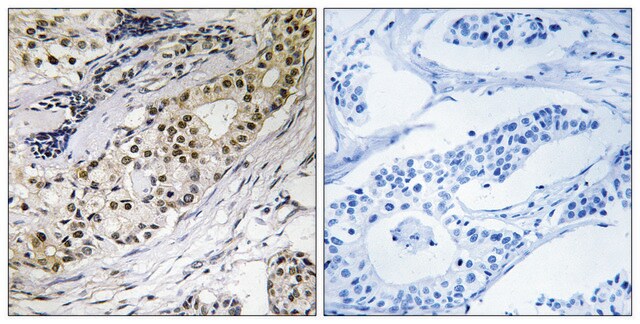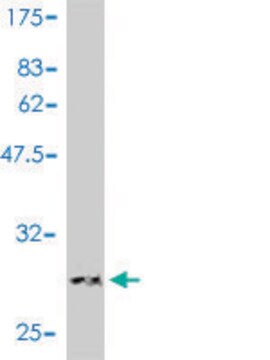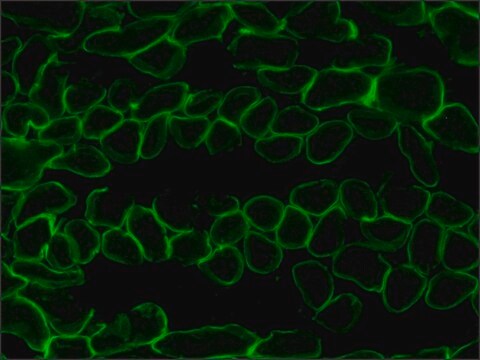MAB1914P
Anti-Laminin gamma 1 Antibody, clone A5
clone A5, Chemicon®, from rat
Sinónimos:
LAMC1
About This Item
Productos recomendados
origen biológico
rat
Nivel de calidad
forma del anticuerpo
purified immunoglobulin
tipo de anticuerpo
primary antibodies
clon
A5, monoclonal
reactividad de especies
mouse, human
fabricante / nombre comercial
Chemicon®
técnicas
immunohistochemistry: suitable (paraffin)
isotipo
IgG2aκ
Nº de acceso UniProt
Condiciones de envío
wet ice
modificación del objetivo postraduccional
unmodified
Información sobre el gen
human ... LAMC1(3915)
Descripción general
Inmunógeno
Aplicación
ECM Proteins
Adhesion (CAMs)
Descripción de destino
Forma física
Nota de análisis
Tubular carcinoma of the colon and fibroneuroma
Otras notas
Información legal
¿No encuentra el producto adecuado?
Pruebe nuestro Herramienta de selección de productos.
Código de clase de almacenamiento
12 - Non Combustible Liquids
Clase de riesgo para el agua (WGK)
WGK 1
Punto de inflamabilidad (°F)
Not applicable
Punto de inflamabilidad (°C)
Not applicable
Certificados de análisis (COA)
Busque Certificados de análisis (COA) introduciendo el número de lote del producto. Los números de lote se encuentran en la etiqueta del producto después de las palabras «Lot» o «Batch»
¿Ya tiene este producto?
Encuentre la documentación para los productos que ha comprado recientemente en la Biblioteca de documentos.
Nuestro equipo de científicos tiene experiencia en todas las áreas de investigación: Ciencias de la vida, Ciencia de los materiales, Síntesis química, Cromatografía, Analítica y muchas otras.
Póngase en contacto con el Servicio técnico








